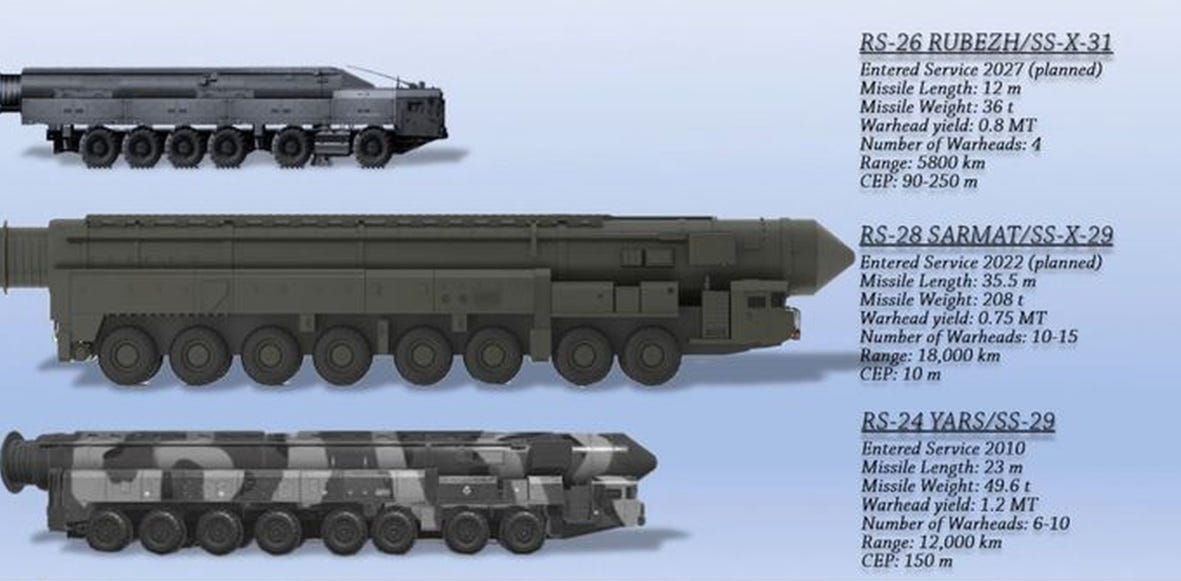Good evening everybody (or good morning for those already up on 22 November)!
Something like a ‘round-up’ of yesterday’s Russian ‘strike on Dnipro by intercontinental ballistic missile/s’…
Call it a hyperbole if you like - and have no doubt: the following is something like a ‘resume or preliminary assessments’ - but, after asking a few people around, I cannot avoid the following impression:
- the High Command Ukrainian Air Force & Air Defence Force (PSU) was hysteric (once again... can't even say I'm surprised),
- Putin is frustrated, and
- both are lying.
Why?
For the start, and contrary to what the PSU claimed, the missile fired by the Russians at Dnipro was no 'intercontinental ballistic missile’ (ICBM).
It was an 'intermediate range ballistic missile' (IRBM).
That said, Putin lied when explaining it for a 'new missile'. Sure, he's given it a new name: Oreshnik. However, it's no 'entirely new missile': rather a 'conventional version' of the RS-26 Rubezh. Rubezh was developed back in the 2010s, but never entered service: the project was shelved in 2017-2018. Arguably, during a test in 2017, it 'demonstrated' a range of 5,500-5,800km.
Now, the Russians - probably on advice from Dmitry Rogozin, former Deputy Minister of the Military Industrial complex (removed for corruption), and in attempt to make Pudding happy - came to the idea to take one of Rubezh-prototypes out of mothballs (they’re rarely throwing such stuff away), and use it for PRBS-purposes.
By the looks of what is visible to have come down in Dnipro, the Russians equipped that missile with something like '6 banks of 6 warheads' each; each warhead weighting some 30kg, but lacking any kind of explosive filler. The idea is that when such a ‘warhead’ comes down to the earth at Mach 10, then it's certain to smash everything in its way...
Why doing that?
Because the RS-26 Rubezh lacks precision necessary for deployment of conventional warheads. Some say it is so inprecise, it has the ‘circular error probable’ (CEP) or 200-500 metres (insufficient to hit a football stadium, actully). Therefore, it needed a warhead that might have a better chance to ‘hit anything’. As a consequence, this Oreshnik variant is then equipped with 36 small warheads: the expected effects of these are comparable to those of a ‘cluster warhead'.

That’s why there are six ‘big flashes’ visible on other videos as coming down through the clouds over Dnipro: each of these six ‘big flashes’, consisted of six ‘streaks’ left behind by MIRVs - as visible on the still above.
’Said, done’… with a result that a super-expensive missile (a price of a single RS-26 was estimated at around US$50 million) was fired over mere 800km, which is something like its minimum range, to cause minimal damage, but enable Pudding to threat, boast and present himself as stronk for the Russian public and fans abroad. While, actually, he’s unlikely to be capable of repeating the exercise, simply because there are not many RS-26 left to rebuilb into Oreshniks.... at least not before his Raketniki complete the expansion of their missile production facilities (which, reportedly, is already in the process).
What's more important: the Biden admin called Moscow and announced it the change of policy re. ATACMS - in advance. And, although not required to do so (because this was no ICBM) then Moscow called Washington to announce this launch at Dnipro - in advance. So, at least the US-Russian system of avoiding escalation is actually, still working.
...and that's it. That much about 'provocation' and 'escalation'.





One and only- Tom Cooper ✅🔝🙏
My gosh, the nuke was a scam. Who would have thought?